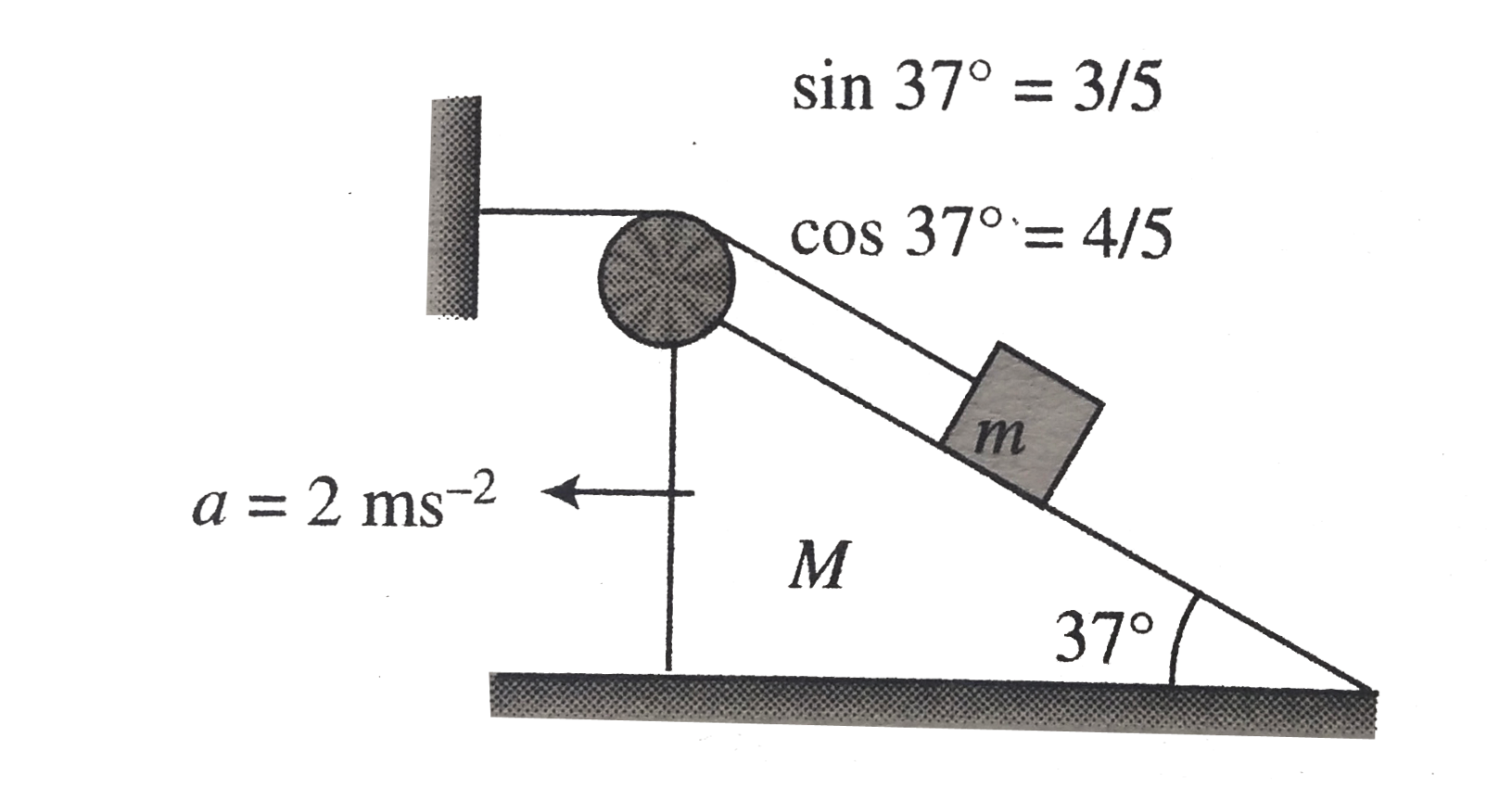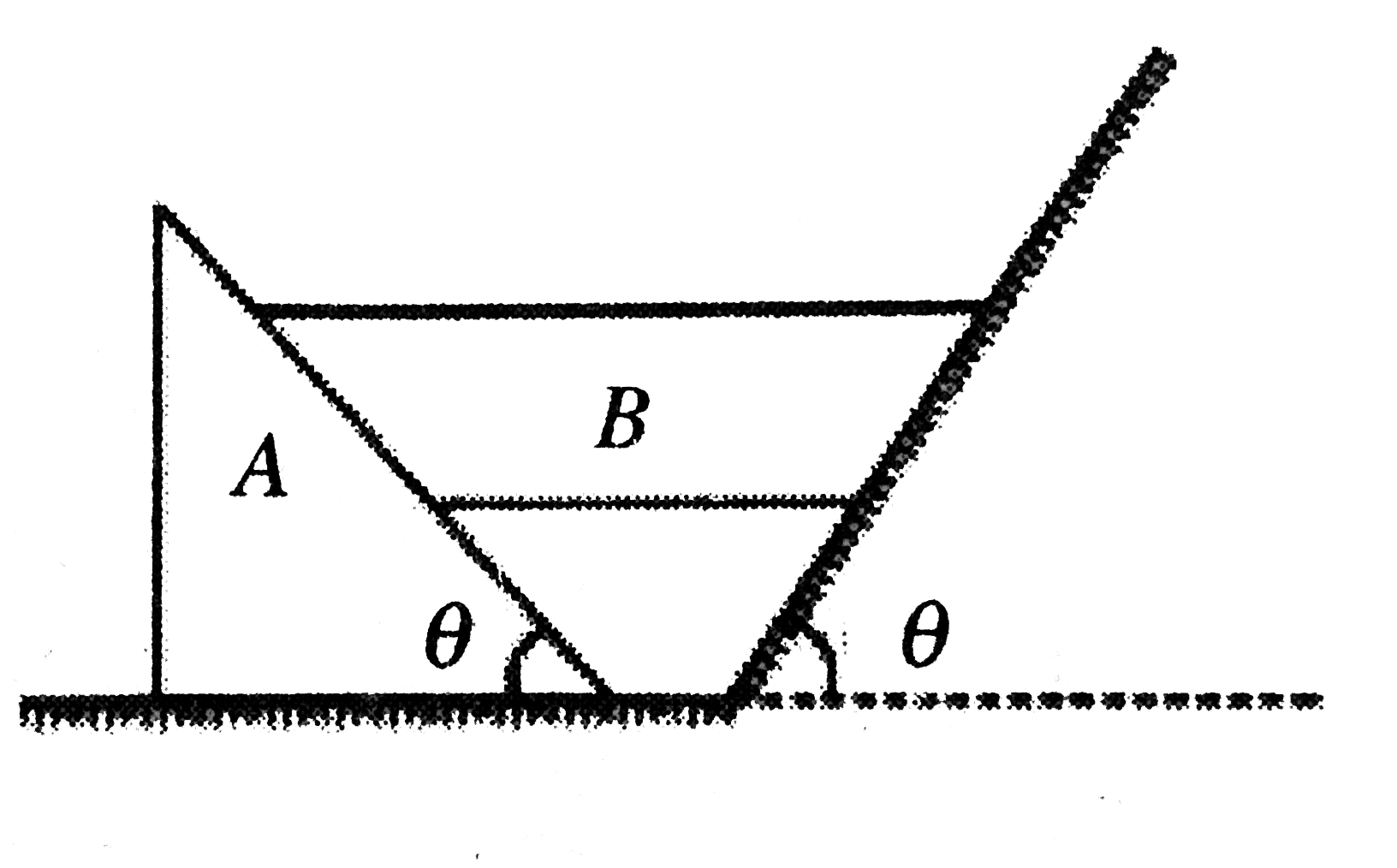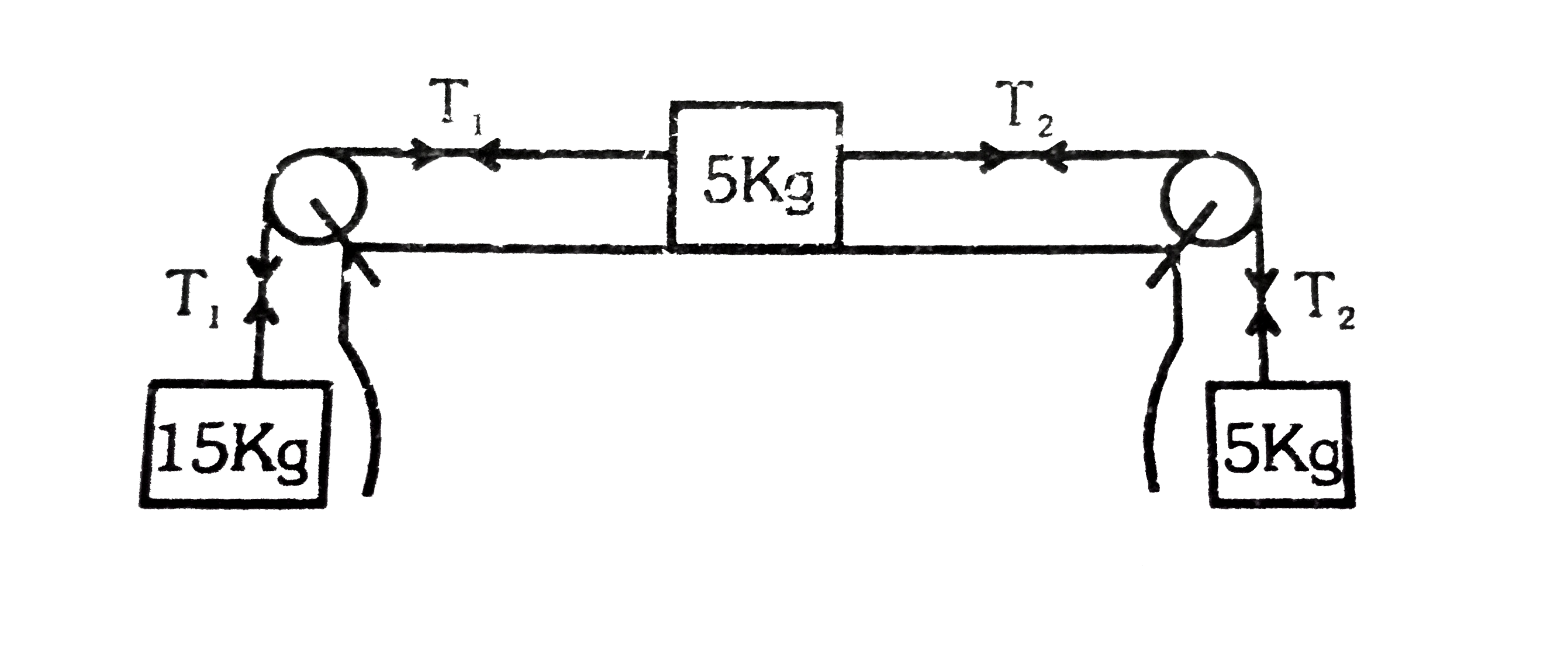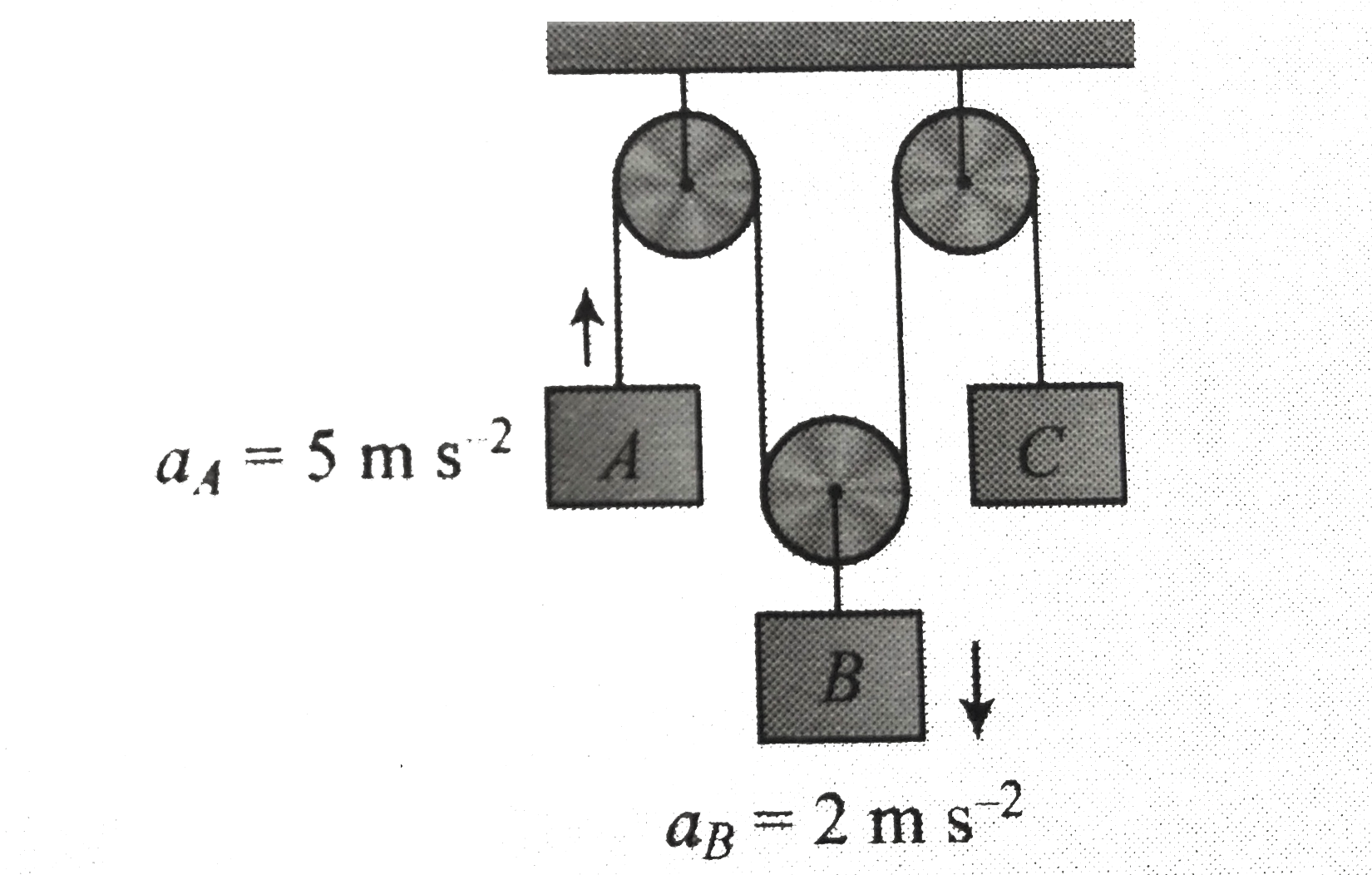In fig. find the acceleration of B if acceleration of A is 2ms−2.

The correct Answer is:2
l1+l2=C⇒l''1+l''2=0

=−ap+(12−aP)=0⇒ap=6ms−2
l3+l4+l5+l6=C
l''3+l''4+l''5+l''6=0
aP−aB−aB−aB=0
⇒ap=3aB⇒aB=2ms−1.
Topper's Solved these Questions
- BOOK - CENGAGE PHYSICS ENGLISHCHAPTER - NEWTON'S LAWS OF MOTION 1EXERCISE - Linked Comperhension46videos
NEWTON'S LAWS OF MOTION 1
- BOOK - CENGAGE PHYSICS ENGLISHCHAPTER - MISCELLANEOUS VOLUME 2EXERCISE - INTEGER_TYPE10videos
MISCELLANEOUS VOLUME 2
- BOOK - CENGAGE PHYSICS ENGLISHCHAPTER - NEWTON'S LAWS OF MOTION 2EXERCISE - Integer type1videos
NEWTON'S LAWS OF MOTION 2
Similar Questions
Knowledge Check
- Question 1 - Select One
A person in an elevator accelerating upwards with an acceleration of 2ms−2 , tosses a coin vertically upwards with a speed of 20ms−1 . After how much time will the coin fall back into his hand ? (g = 10 ms−2)
A53sB310sC103sD35s
Find the acceleration of 3 kg mass when acceleration of 2 kg mass is 2ms−2 as shown in figure-2.140
 View Solution
View SolutionA person in an elevator accelerating upwards with an acceleration of 2ms−2 , tosses a coin vertically upwards with a speed of 20ms−1 . After how much time will the coin fall back into his hand ? (g = 10 ms−2)
View SolutionA person in an elevator accelerating upwards with an acceleration of 2ms−2 , tosses a coin vertically upwards with a speed of 20ms−1 . After how much time will the coin fall back into his hand ? (g = 10 ms−2)
View SolutionAs shown in fig, if acceleration of M with respect to ground is 2ms−2, then
 View Solution
View SolutionIn the arrangement shown in fig., if the acceleration of B is →a. Then find the acceleration of A.
 View Solution
View SolutionIn the situation as shown in the figure if acceleration of B is a, then find the acceleration of A (B always remain horizintal),
 View Solution
View SolutionThe fricition coefficient between the table and block shown in fig. is 0.2 find the acceleration of the system (Take g=10m/s2)
 View Solution
View Solution



